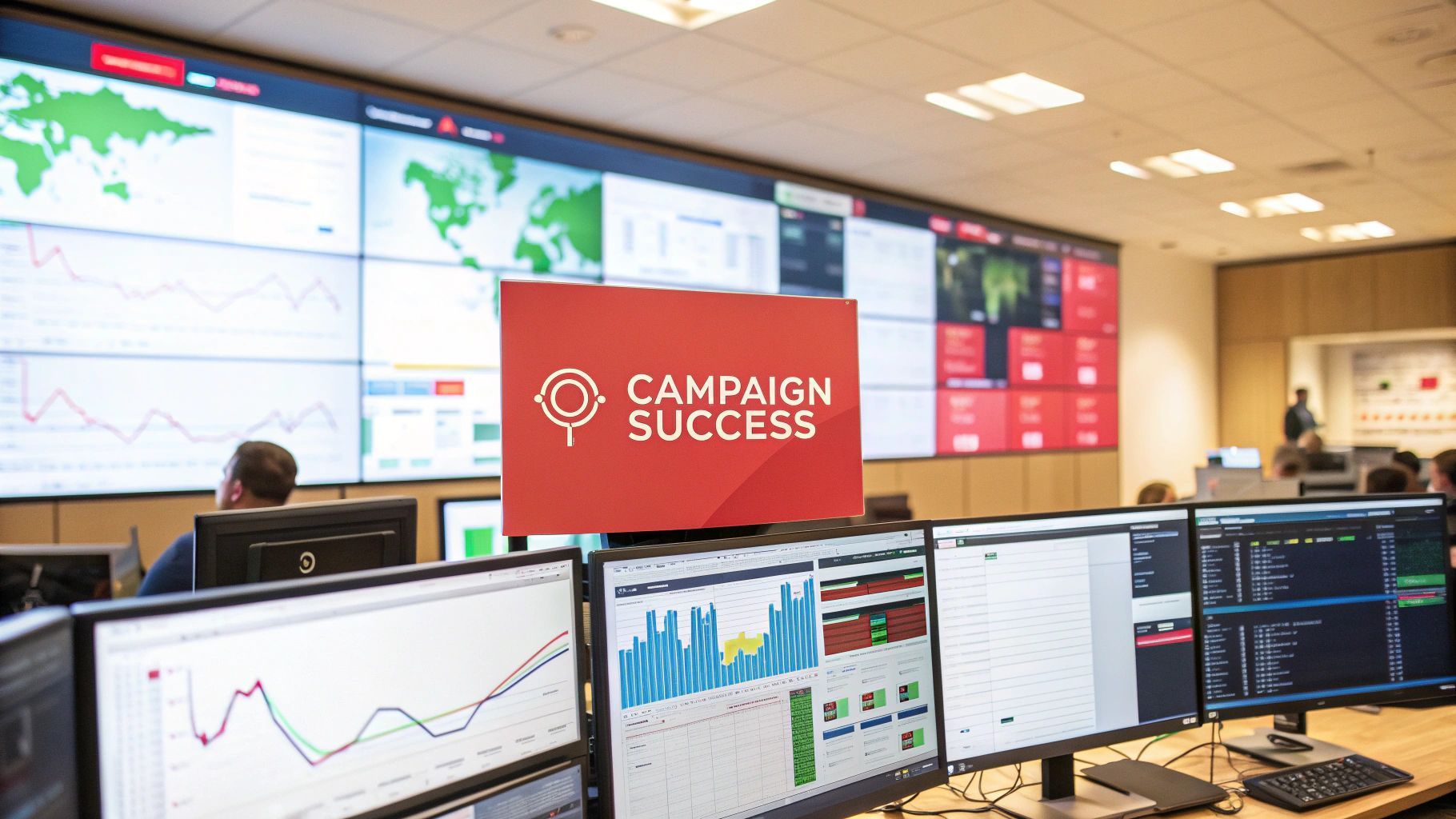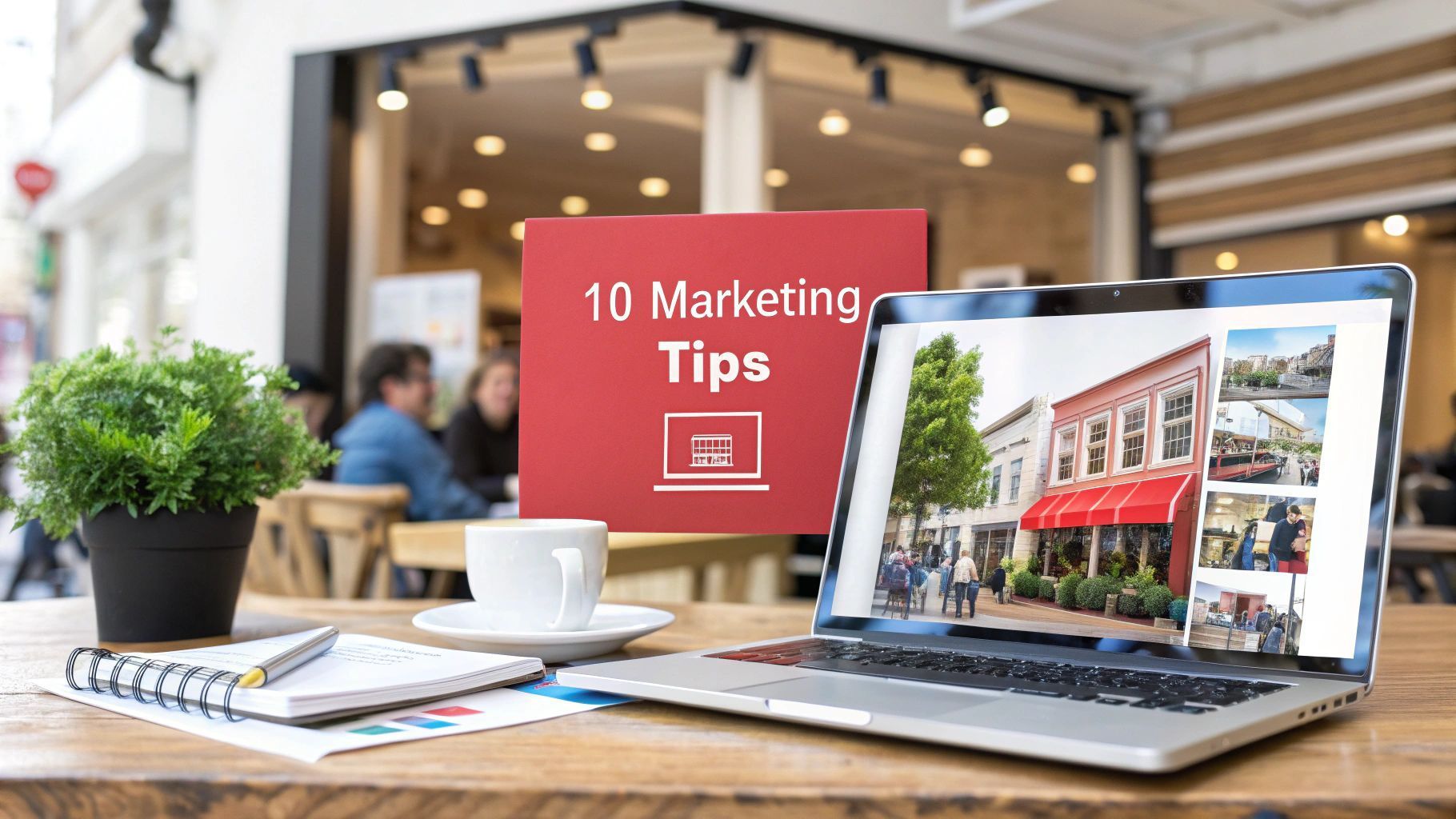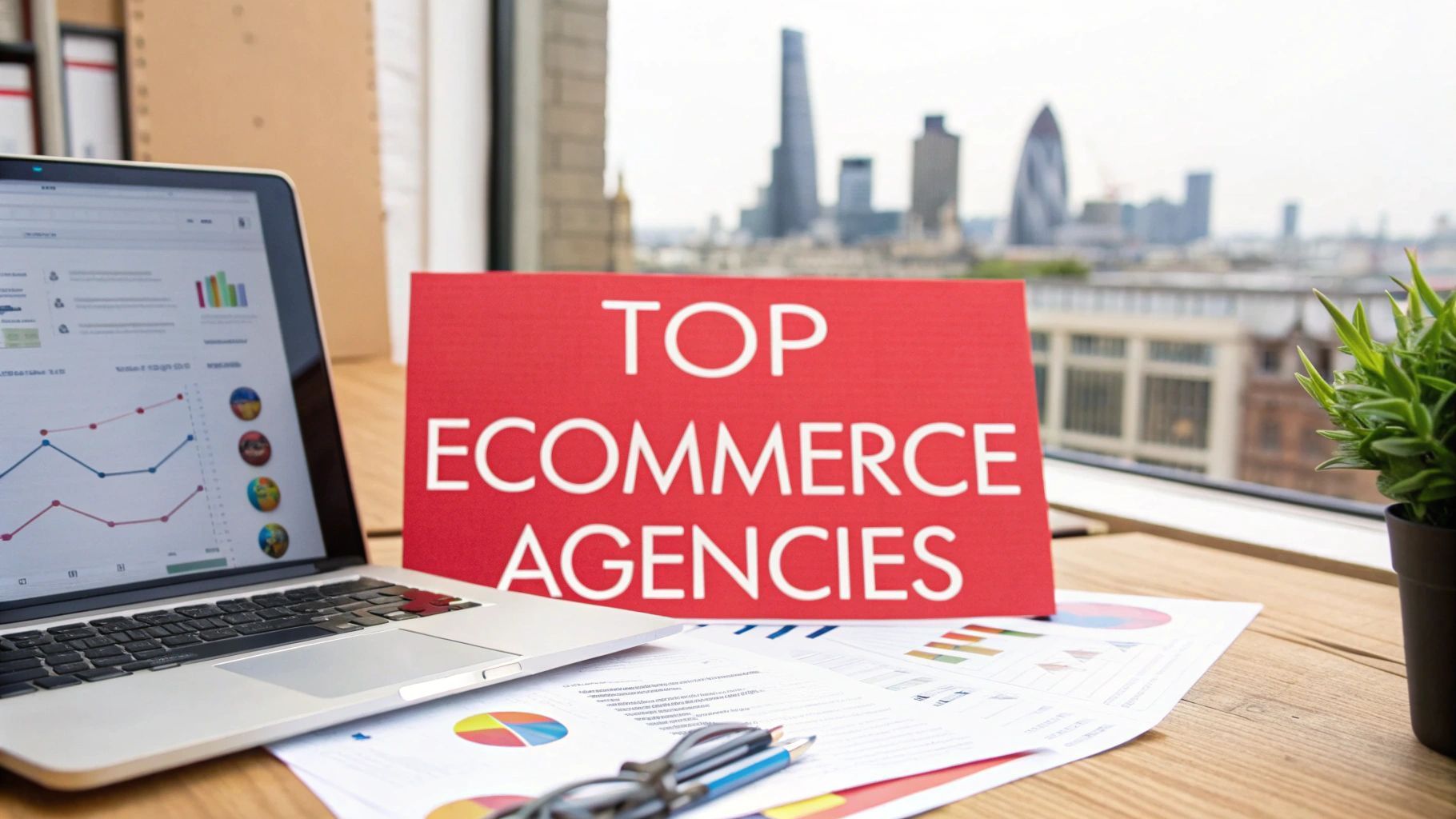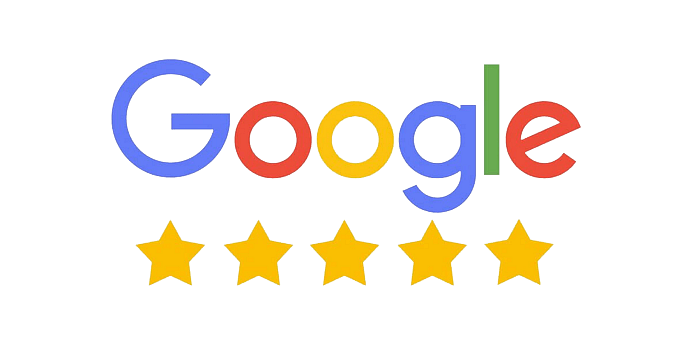A Winning Motorsport Sponsorship Proposal Guide
A winning motorsport sponsorship proposal isn't a request for money. It’s a compelling business case that frames your racing as a powerful marketing opportunity. To get it right, you have to stop thinking about your own needs and start thinking like a sponsor. You need to understand their goals and show them exactly how they’ll get a return on their investment through branding, fan engagement and smart activation ideas.
Before You Write: Get Inside the Sponsor's Head
The best sponsorship proposals are won long before you type the first word. So many drivers make the same mistake: they focus entirely on what they need. The cost of new tyres, the eye-watering entry fees, the budget to keep the car on track. To a potential sponsor, that’s just a list of your costs. It’s not an investment.
To get the funding you need, you have to completely flip the script. You're not a driver asking for a handout; you're a marketing partner offering a solution.
This means your first job is to step into their world. What are their business goals right now? Who are they trying to sell to? What does their marketing look like and where are the gaps you can fill? This isn't about pleading for help. It’s about building a sharp, data-driven business case that positions your team as an unmissable marketing platform.
Pinpoint Sponsors with Real Brand Synergy
Firing off proposals to random companies is a complete waste of everyone’s time. The real work is in finding businesses whose brand values and target audience actually align with yours. If you’re competing in a grassroots club series with a family-friendly paddock, a local car dealership or estate agent makes far more sense than a global luxury brand.
A good place to start is by looking at who is already active in motorsport. In markets like the Americas, motor racing pulls in around 20% of all automotive sponsorship deals. That tells you there’s a clear appetite for what we do – brands want to be associated with performance and technology. It proves they're willing to invest but you still have to find the right fit for you.
Define Your Own Brand Identity
What do you actually stand for? Are you the determined underdog fighting your way up? The tech-savvy perfectionist obsessed with data? The charismatic driver everyone in the paddock loves? Your personal brand is a massive asset. It’s the story a sponsor is really buying into.
To build a case they can’t ignore, you need to pull together the right data:
- Audience Demographics: Who are your social media followers? You need to know their age, where they live and what they’re interested in.
- Engagement Metrics: Get to grips with your likes, shares, comments and reach. High engagement with a small, dedicated audience is often more valuable than a huge following that doesn’t care.
- Media Coverage: Have you been featured in local news, blogs or race reports? Every single mention adds another layer of credibility.
Just look at the Motorsport UK website. It showcases the sheer scale of the UK racing scene, from grassroots karting right up to national championships. It’s an organised, professional ecosystem that gives sponsors a reliable platform to connect with passionate audiences at every level. Your proposal needs to show exactly where you fit in and how a partnership with you gives a brand a direct line to those fans. To really nail this, you should understand the top marketing things sponsors will want to see before handing over money.
The best proposals don't sell space on a car; they sell access to an audience. They sell an alignment with the passion, excitement and fierce loyalty that defines motorsport. It’s about showing a sponsor how your story can become part of their story.
Once you’ve done this groundwork, your pitch is completely transformed. It stops being a simple request for cash and becomes a professional, strategic document that speaks the language of marketing directors. It presents a clear path to success—for both of you.
Translate Your Racing Presence into Commercial Value
Before you can even think about writing a compelling sponsorship proposal, you need to know what you’re actually selling. It’s not just blank space on your race car; it's a portfolio of valuable marketing assets.
Your first job is to catalogue every single commercial opportunity you control. Then, you need to present it in a language a marketing director will immediately understand. This is how you turn your on-track activities into a tangible, valuable inventory.
Forget just thinking about the car. Your value stretches far beyond the circuit. A thorough asset list includes everything a sponsor can use to connect with your audience, broken down into distinct categories. This approach moves the conversation from a vague "logo on the car" chat to a specific, itemised list of commercial rights. It shows you’re a professional who gets that sponsorship is a business transaction, not a plea for a donation.
Building Your Sponsorship Asset Inventory
A comprehensive list is the bedrock of your proposal. You need to meticulously document every single piece of value you can offer a potential partner, no matter how small it seems. It all adds up.
Break your inventory down into clear, logical groups to make it easy for sponsors to see the full scope of the opportunity.
- Branding Assets: This is the most obvious stuff. Think primary and secondary logo positions on the car, the driver’s race suit, helmet, team clothing, transporter and pit garage branding.
- Digital Assets: This area is becoming absolutely critical. Catalogue your social media channels (and their reach), offering things like co-branded posts, "takeovers" or dedicated video content. Don't forget logo placement on your website and mentions in email newsletters.
- Event-Based Assets: These are the unique "money-can't-buy" experiences that really set you apart. We're talking VIP hospitality passes for race weekends, exclusive pit tours, driver appearances at trade shows and show car displays at the sponsor’s HQ.
The chart below shows the key sectors currently pouring money into motorsport. This should give you a pretty clear idea of where to focus your research and outreach.
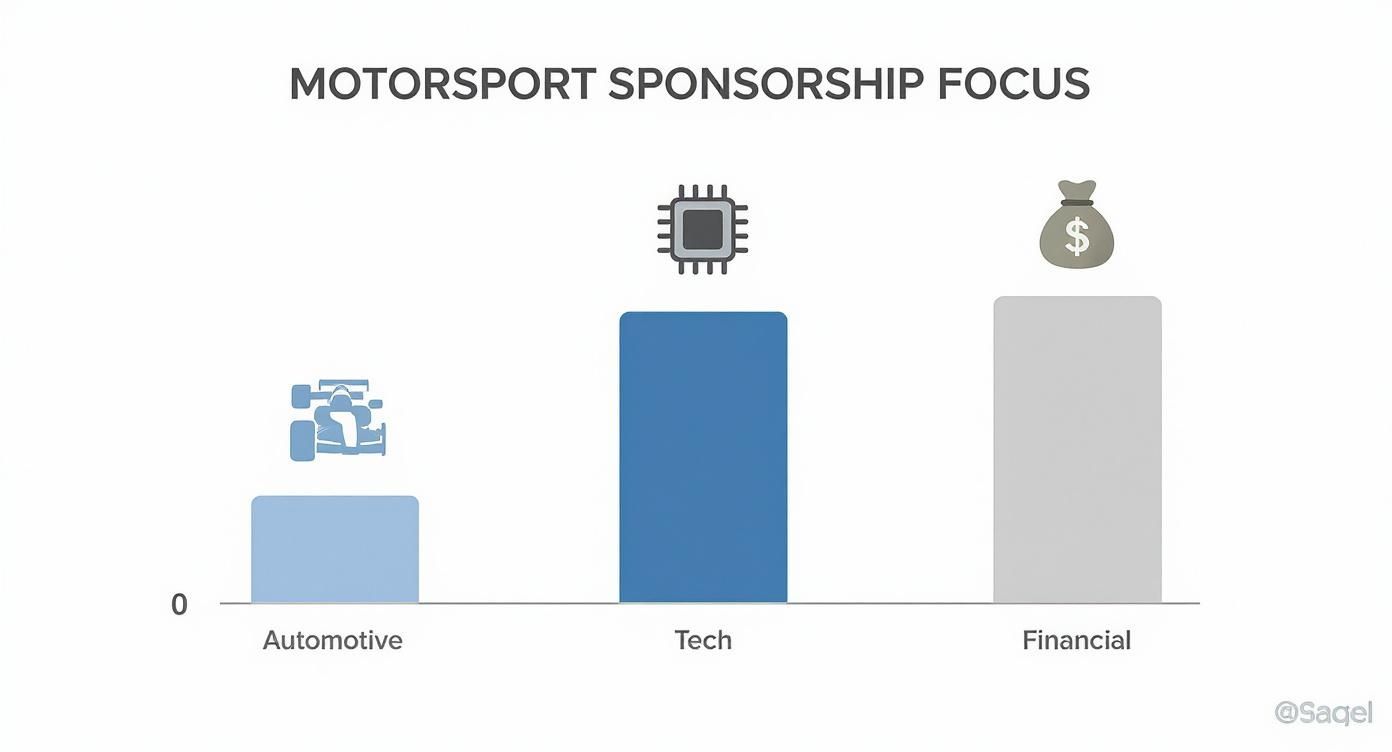
As you can see, while automotive brands are a natural fit, the tech and financial services sectors see huge value in aligning with motorsport's themes of innovation, speed and high performance.
Assigning Credible Valuations
Once your inventory is complete, you have to put a credible, defensible price on each item. Guesswork just won’t cut it here. You need a logical valuation method to build trust and justify your asking price, otherwise you're just pulling numbers out of thin air.
One of the most common methods, especially for digital assets, is Cost Per Mille (CPM) , which simply means cost per thousand impressions. If your social media posts for a sponsor are expected to reach 100,000 people and a typical CPM for that audience is £15 , the value of that exposure is £1,500 . You can find benchmark CPM rates through online marketing resources.
For physical branding assets, like a logo on the car, valuation often comes from industry benchmarking. Do your homework and find out what teams at a similar level in your championship are charging. For hospitality and event assets, calculate your direct costs (like tickets and catering) and then add a healthy premium for the exclusive access you're providing.
To help you get started, here's a sample table breaking down some common assets and how you might value them.
Sample Motorsport Sponsorship Asset Valuation
| Asset Category | Specific Asset Example | Valuation Method | Estimated Value Range (£) |
|---|---|---|---|
| On-Car Branding | Primary Logo on Sidepod (30x50cm) | Media Value Equivalent (MVE) / Industry Benchmarking | £15,000 - £50,000+ |
| Driver Branding | Logo on Chest Area of Race Suit | MVE + Driver Profile | £5,000 - £20,000 |
| Digital Media | Instagram Story Takeover (3 frames) | CPM + Engagement Rate Premium | £500 - £2,500 |
| Website | Homepage Logo & Link | Flat Rate based on Monthly Traffic | £250 - £1,000 (per month) |
| Hospitality | VIP Race Weekend Pass (per person) | Cost-Plus (Ticket Cost + 150-300% Premium) | £1,000 - £3,500 |
| B2B Activation | Driver Appearance at Trade Show (4 hrs) | Appearance Fee Benchmarking | £2,000 - £7,500 |
This is just a guide, of course. Your final numbers will depend on your championship's prestige, TV coverage and your own audience reach.
A well-structured valuation does more than just set a price. It shows you're a serious business partner who understands commercial realities and can articulate value in a language sponsors recognise.
Ultimately, a detailed inventory paired with a clear valuation method allows you to build tiered sponsorship packages with total confidence. This is crucial for showing sponsors exactly what they get for their money and is a key part of understanding how to measure ROI for UK marketers. It shifts the conversation from "How much can we get?" to "Here's the incredible value we can provide."
Right, you've done the hard graft—the research, the number-crunching, the valuation. Now it's time to pull it all together into a document that actually gets read and, more importantly, gets a 'yes'.
Don't underestimate this step. Your sponsorship proposal is your sales pitch, your CV and your business plan all in one. A shoddy, unfocused document can kill a great opportunity before it even starts. Every single section needs to be sharp, clear and relentlessly focused on what the sponsor gets out of the deal.
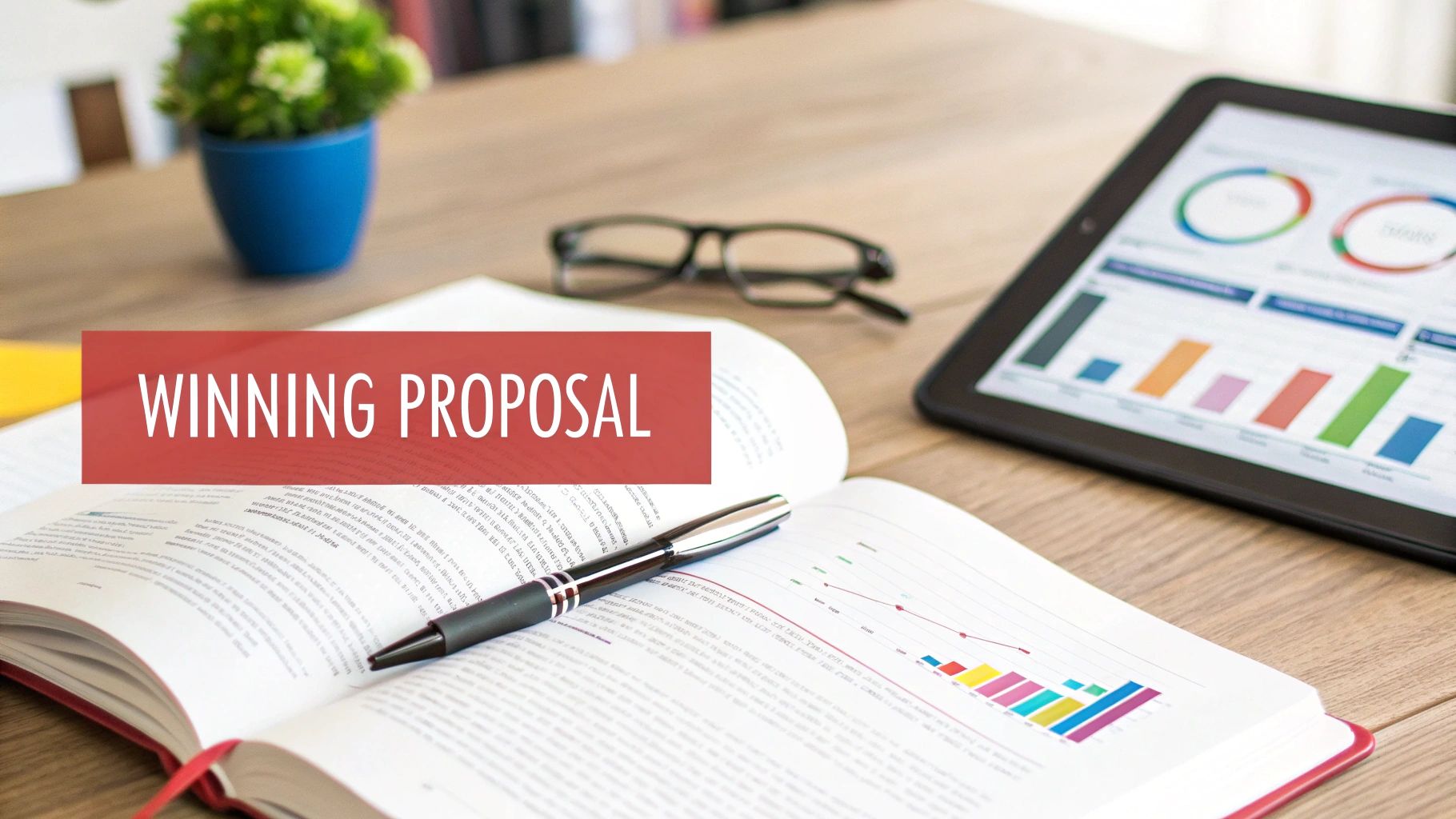
Think of the proposal's structure as a journey. You need to hook the reader from the first line and guide them logically to a clear, compelling call to action. You're telling the story of a powerful partnership, not just begging for cash. This is where you turn dry data into a narrative a marketing director can actually get excited about.
Start with a Powerful Executive Summary
Let's be realistic: a busy marketing director might only scan the first page. That means your executive summary has to do all the heavy lifting. This is your one shot to sell the entire partnership in about 200 words . Nail it and they'll keep reading.
Make sure it hits these four points, quickly and cleanly:
- The Opportunity: A single sentence that gets straight to the point. Example: "A Title Sponsorship opportunity with a rising GT4 team, offering direct engagement with a loyal UK motorsport audience."
- Who You Are: A brief, punchy intro to your team or personal brand.
- The Ask: State the investment level you’re looking for. No fluff.
- The Return: Summarise the big wins for them—brand exposure, lead generation, unique hospitality.
This isn't just an intro; it sets the tone for everything. It needs to be confident, professional and laser-focused on the value you're bringing to their table.
Introduce Your Team and Tell Your Story
Once you've got their attention, it's time for a proper introduction. This is where you build an emotional connection. Remember, sponsors invest in people just as much as they invest in platforms.
Share your journey, your ambition and what makes your team different. Don't just list race results. Instead, frame your achievements as proof of your drive, professionalism and growing profile. This is your chance to let your personality shine through and show you're a credible partner they can trust.
The UK motorsport scene is a powerful network. With around 720 affiliated motor clubs , 30,000 competition licence holders and 10,000 volunteer marshals , it’s a deeply passionate community. This gives sponsors a direct line to dedicated fans at every level of the sport.
Present Your Audience and Media Reach
Now for the proof. This section is where you back up all your claims with cold, hard data. Don't just write it out; use charts and graphs to make your audience demographics and media metrics easy to digest at a glance.
Your data should include:
- Social Media Analytics: Follower numbers, reach and engagement rates for every platform.
- Website Traffic: Monthly visitors and audience demographics, if you have them.
- Media Coverage: Showcase any press clippings, online articles or TV mentions.
A classic mistake is just dumping numbers without context. Don’t just say you have 10,000 followers. Show the sponsor who those followers are and explain why they are the exact people their business needs to reach.
Structure Your Offer with Tiered Packages
Never, ever present a single, take-it-or-leave-it price. It’s amateur and it closes doors. The industry standard is to offer tiered packages—think Gold, Silver and Bronze. This simple approach gives potential sponsors options and shows you've thought about different budget levels.
Each package needs a clear name, a price and a detailed list of the assets included from your inventory. This makes it incredibly easy for a sponsor to compare the value at each investment level and see exactly what they get for their money. If you need a starting point, checking out some free sample sponsorship proposal templates can help you structure this effectively.
Articulate the Return on Investment
This is it. The most critical part of your entire proposal. You have to spell out the Return on Investment (ROI) in language a business understands. Connect every single asset you offer back to a tangible business benefit for them.
Frame the ROI around their key marketing goals:
- Brand Awareness: Use your media values and audience reach to project how many eyeballs will see their brand. Give them a number.
- Lead Generation: Explain exactly how you'll help them capture new customer leads, maybe through at-event sign-ups or a social media competition.
- Customer Engagement: Detail how your unique hospitality and behind-the-scenes experiences can help them build rock-solid relationships with their most important clients.
When you frame your proposal around their potential return, it stops being a cost and becomes a strategic marketing investment. That’s how you get your proposal read—and, more importantly, signed.
Develop Creative Sponsorship Activation Ideas
A perfectly valued proposal is a great start but it won’t get you over the line. The section that truly separates the amateurs from the pros is sponsorship activation . This is where you stop asking for money and start showing a potential partner exactly how you'll help them hit their marketing goals.
This is your chance to prove you’ve done your homework. Anyone can send a list of assets. A bespoke set of activation ideas shows you're already thinking like a partner, invested in their success from day one. It turns your document from a funding request into an exciting, collaborative marketing plan.
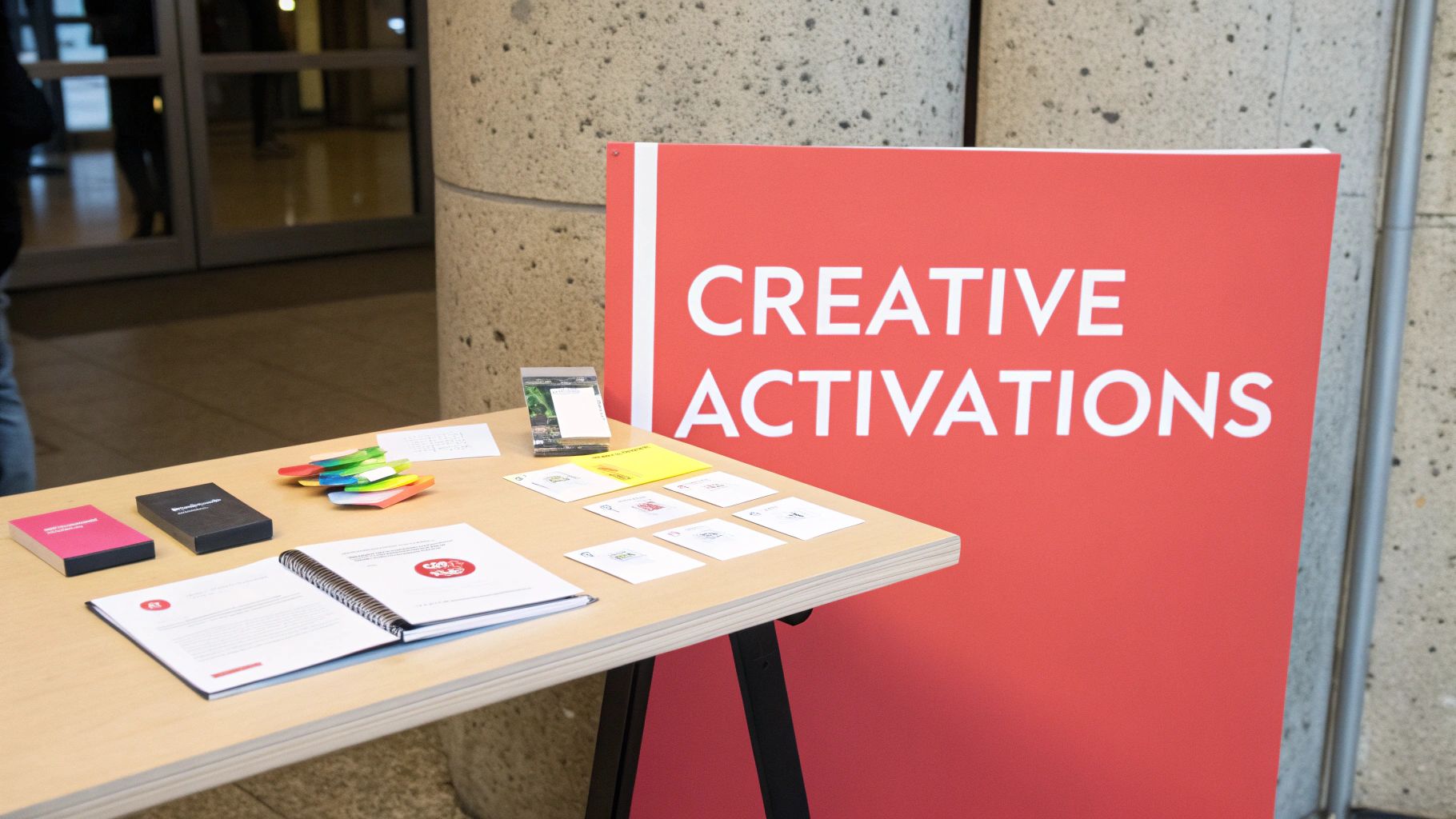
This proactive thinking is essential in a crowded market. Motorsport sponsorship is a big business, especially at the top. In 2025, global sponsorship spending in Formula One alone is projected to hit US$2.9 billion . Within that, F1 teams generate around 72% of their revenue from partners, with major players coming from the tech and financial services sectors. The big brands have the budgets but they expect sophisticated, well-thought-out marketing plans in return.
Go Beyond the Logo on the Car
Every proposal includes logo placement. That’s the bare minimum. The exceptional ones suggest interesting ways to bring the partnership to life. Your job is to brainstorm specific, actionable ideas that connect directly with the sponsor's brand and what they’re trying to achieve.
Think about what they actually value. A B2B tech firm has completely different goals to a consumer drinks brand.
- For a B2B Company: You could propose exclusive trackside networking events where they can host their top clients. Or maybe offer to have your show car on their stand at a major industry trade show, acting as a massive magnet for footfall.
- For a Consumer Brand: How about at-event product sampling, where your team hands out their products to fans in the paddock? You could also plan a co-branded social media competition to win VIP race day tickets, which drives huge engagement and captures valuable customer data.
These aren’t just vague ideas; they're tangible marketing campaigns you can help them deliver. By thinking through the practicalities, you show a level of commercial savvy that builds instant credibility.
The best activation ideas create genuine value for everyone. The sponsor gets their marketing return, the fans get a memorable experience and you solidify a strong, long-term partnership.
Creating "Money-Can't-Buy" Experiences
One of the most powerful assets you have is access. Sponsors are always looking for unique ways to reward high-value clients, motivate their sales teams or create compelling content for their own marketing.
You can offer experiences that money can’t normally buy.
- Exclusive Pit Tours: A guided, behind-the-scenes look at the garage during a race weekend is unforgettable.
- Driver Q&A Sessions: Arrange for your driver to speak at a sponsor's corporate event or host a private Q&A for their top customers.
- Hot Laps or Simulator Challenges: For the ultimate thrill, offer passenger laps in a high-performance road car or set up a simulator competition at their headquarters.
These experiences generate incredible goodwill and forge a powerful emotional connection to the sponsor's brand. When you include these in your proposal, you’re not just selling exposure; you’re providing a unique tool for relationship building. For more on crafting campaigns that get results, check out our guide on effective motorsport marketing with Superhub.
By presenting a suite of tailored activation concepts, you prove you’re more than just a racer looking for funding. You’re a strategic marketing partner, ready to drive results.
Perfecting Your Outreach and Follow-Up
You’ve poured everything into crafting the perfect motorsport sponsorship proposal. It’s sharp, persuasive and packed with brilliant activation ideas. But none of that matters if it just sits, unopened, in the wrong inbox. The final hurdle—and honestly, the most critical—is getting it in front of the right person and then managing that conversation like a pro.
Sending a killer proposal to a generic info@company.com
email is like putting high-performance fuel in a lawnmower. It’s a complete waste. Your outreach needs to be just as strategic as the proposal itself. It's all about finding the one person with the power to say 'yes' and approaching them in a way that cuts through the noise.
This last stage isn’t about blasting out files; it’s about building genuine professional relationships. That takes patience, persistence and a clear game plan for every interaction, from that first email right through to the final handshake.
Finding the Right Decision-Maker
Before you even think about hitting send, it’s time to do a bit of detective work. One of the biggest mistakes I see is people firing off their proposal to the CEO of a huge company. Nine times out of ten, they’re not the one handling sponsorship. You’re looking for a Marketing Director, Brand Manager or a dedicated Sponsorship Manager.
LinkedIn is your best friend here. Use its search tools to pinpoint people with these titles at your target companies. Look for roles that mention brand partnerships or regional marketing. Once you have a name, you have a target. The aim is to get past the anonymous contact forms and start a real, person-to-person conversation. For a deeper look at proactively finding sponsors, there are some great guides on mastering outbound lead generation.
Nailing the First Email
Okay, listen up: your first email should never include your full proposal as an attachment. A busy director isn’t going to open a big, unsolicited PDF from someone they don’t know. The only goal of this first message is to get a reply and earn their permission to send the main document.
Keep it short, sharp and focused on them. The subject line needs to be professional and to the point, something like "Partnership Enquiry | [Your Team Name] & [Their Brand Name]".
Then, follow this simple structure for the email body:
- Quick Intro: One sentence explaining who you are.
- The Hook: Show you’ve done your homework. Explain why you’re contacting them specifically. For instance, "I saw your recent campaign focused on high-performance and believe our audience aligns perfectly."
- The Soft Ask: Don't demand they read anything. Just ask a simple question: "Would you be the right person to speak to about a potential marketing partnership for 2025?"
- The Sign-Off: Keep it professional and brief.
This approach is respectful of their time and makes it incredibly easy for them to either say "yes, that's me" or forward your email to the right colleague.
A great initial email doesn't sell your sponsorship; it sells the next conversation. It’s a low-commitment request that opens the door for your detailed proposal.
The Professional Follow-Up Plan
Silence doesn't always mean 'no'. People are swamped and inboxes are chaotic. A polite, professional follow-up strategy is essential but there’s a fine line between persistence and being a pest. A well-timed plan shows you’re serious, not desperate.
Here’s a simple but effective schedule to follow:
- Initial Email: Send it on a Tuesday morning.
- Follow-Up 1 (3-4 days later): A simple, polite reply to your original message. "Just wanted to check this came through correctly. Any guidance on the best person to speak with would be greatly appreciated."
- Follow-Up 2 (7-10 days after F1): Time for a fresh email with a slightly different hook. Maybe reference a recent company announcement or a relevant bit of industry news to add new value.
- The Break-Up Email (7-10 days after F2): Still nothing? It's time to politely close the loop. "I assume this isn't a priority for you right now, so I won't contact you about this again. Please feel free to reach out if that changes." This professional move often gets a response and keeps the door open for the future.
Handling Every Response with Grace
When you finally get that reply, how you handle it sets the tone for everything else. If they ask for the proposal, send it over promptly with a short, personalised note. If they say no, thank them for their time and consideration. A polite 'no' today could easily turn into a warm lead next season if you handle it with class. Remember, every interaction is a chance to build your reputation.
Answering Your Motorsport Sponsorship Questions
When you're deep in the process of building your proposal, questions are bound to pop up. Getting sponsorship right can feel complicated, so here are some clear, straightforward answers to the queries we hear most often.
How Much Should I Ask For in a Sponsorship Proposal?
There’s no magic number. Your asking price has to be a direct reflection of the commercial value you can deliver, backed up by a proper valuation of your assets.
Start by listing absolutely everything you can offer—from the prime branding space on the car to social media campaigns and those exclusive hospitality passes. Do a bit of research to see what similar teams at your level are charging to put a credible market value on each item. A smart approach is to present tiered packages (e.g., £5,000 , £15,000 , £40,000 ). This gives potential sponsors flexible options that can slot into different budgets.
What Is the Most Important Part of the Proposal?
Every section plays its part but two areas carry the most weight: the Executive Summary and your Activation Ideas . A busy marketing director might only scan the first page, so your executive summary needs to sell the entire opportunity in a few powerful paragraphs.
Your activation ideas are what will truly set your proposal apart from the stack on their desk. This section proves you’ve actually thought about their business and are pitching a genuine marketing partnership, not just asking for a cheque. It’s your chance to show you’re a creative partner who can bring real value.
Should I Send My Proposal as a PDF or a Physical Document?
Your first move should almost always be digital. A professionally designed PDF sent over email is easy for someone to review and, just as importantly, share with other decision-makers in their company.
That said, a high-quality printed version can leave a serious, premium impression. Think about using a physical copy as a follow-up for a high-value prospect or a local business where you’ve already built a good connection. It should support your digital strategy, not replace it.
The biggest mistake you can make is writing a proposal that’s all about you and your need for money. You have to frame it from the sponsor's perspective, focusing on the marketing value and ROI you provide. This simple shift in mindset changes absolutely everything.
What Common Mistakes Should I Avoid?
Aside from the self-centred approach, a few other errors can kill your chances instantly. Poor grammar and spelling just scream unprofessionalism, so proofread everything. Twice.
Other critical mistakes include:
- Failing to research the company: Sending a generic, 'one-size-fits-all' proposal shows you haven't bothered to do your homework.
- No clear call-to-action: You must tell the reader exactly what you want them to do next, whether that’s scheduling a call or reviewing your package options.
- Unjustified pricing: Never just throw a figure out there without a detailed valuation to back it up.
At Superhub , we specialise in connecting motorsport talent with the right sponsors. Our expertise in digital marketing and sponsor recruitment helps drivers and teams build compelling proposals and secure the funding they need to succeed on and off the track. Discover how we can drive your motorsport career forward.

